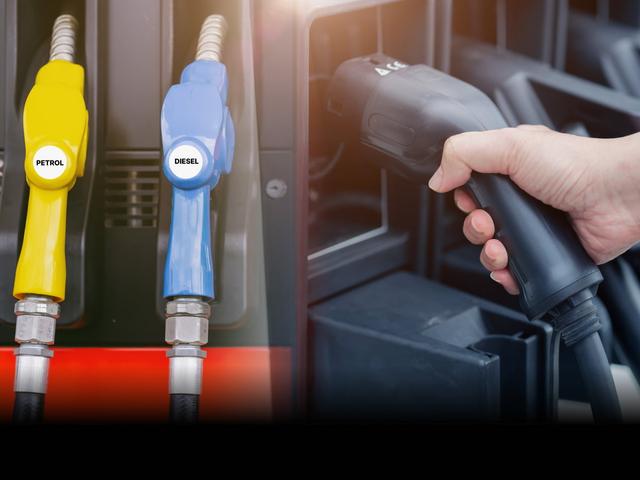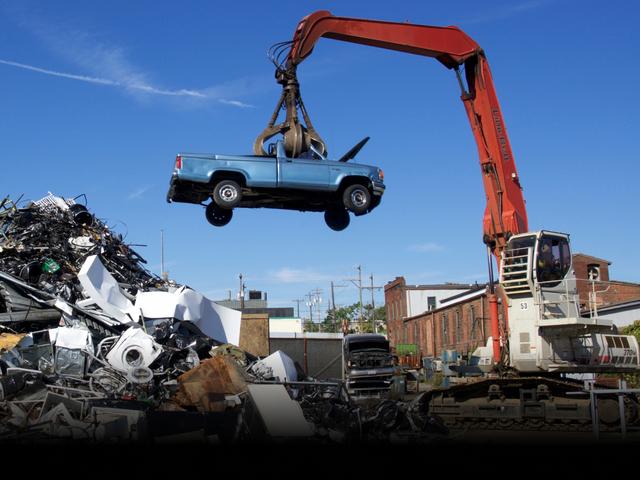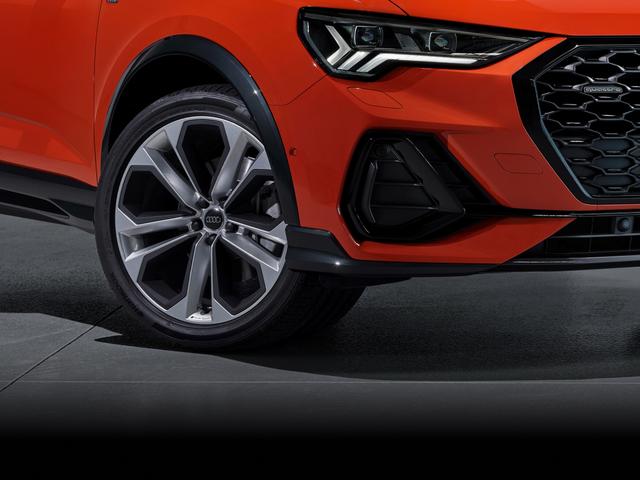


Blink blink !
Its almost here


The ultimate guide to car detailing: What you need to know
- 1Detailing is the cleaning, restoration and protection of a vehicle inside and out
- 2It can be done professionally or at home using the right equipment and products
- 3Regular detailing can enhance your car’s resale value as time passes
- Types of car detailing services
- Benefits of regular car detailing
- The car detailing process explained
- How often should you get your car detailed?
- DIY car detailing vs. professional services
- Key products and tools used in car detailing
- Common car detailing mistakes to avoid
- Car detailing costs: What to expect
- How to choose the right car detailing service
- Conclusion
Whether you’re a car enthusiast or just a regular commuter, there’s no better time than now if you enjoy the simple pleasure of driving a clean, shiny vehicle. Car detailing services are everywhere you look and cater to every budget. Car detailing is the process of restoring a car’s appearance to a showroom-like finish inside and out. Detailing goes above and beyond what you can expect from a regular car wash. Think of it this way: a car wash can make a dirty car clean, while detailing can make a dull-looking car shiny again.
In the short term, the benefits of car detailing are improved safety through better visibility and hygiene, and enhancement of a car’s appearance. In the long term, regular car detailing can reduce the impact of wear and tear and protect from UV damage, rust and corrosion, apart from regular servicing. Detailing can really enhance a car’s resale value as well. If you’re curious about the car detailing process, how often you should get your car detailed and how much car detailing costs, you’ve come to the right place.
Types of car detailing services
The key difference between car detailing and a car wash is in the number of services/steps offered in the former. A car wash will usually only clean a car, while a car detailing service will clean, enhance and protect. Car detailing includes all the services offered in a regular car wash, usually with a higher attention to detail.
It also usually includes interior detailing, exterior detailing and engine bay detailing. Other value-add services are also available such as interior deep cleaning, AC sanitisation, odour removal, plastic trim restoration, underbody cleaning, wheel well cleaning and alloy wheel stain removal, to name a few.
Interior detailing
Think of interior detailing as a thorough dive into your car’s cabin to bring it back to looking and smelling like new. The interior detailing process involves a thorough dry vacuuming to remove dust and loose debris from the upholstery and carpets, including in the hard-to-reach areas and in the car’s boot. Depending on how dirty/soiled the seats are, this can be followed by an upholstery deep clean. In a deep clean, or wet cleaning, the seats/upholstery will be shampooed and then dried using a wet vacuum cleaner or extractor machine. The final step is to dress plastic surfaces with a product that protects from UV degradation that can lead to premature fading or cracking.
Exterior detailing
Exterior detailing is the process of rejuvenating the exteriors of a car through paint correction and protection. In simple terms, polish and wax. However, the term detailing implies more attention to detail.
- The detailing process starts with a thorough wash with a car-specific shampoo
- The next step is mechanical decontamination with a clay bar, to remove impurities embedded in the top layer of the paint
- Chemical decontamination follows next to help soften and remove any tar/water spots on the exteriors of a car
- This is followed up by paint correction using an abrasive compound if there’s heavy oxidation and swirling in the finish. For newer cars or paint jobs in relatively good condition, a paint rejuvenation step could suffice. This entails using a less abrasive polish. Polish or compound can be applied either by hand or by polishing machines and then buffed off
- The car’s paint must then be thoroughly wiped down with iso-propyl alcohol to remove any polish/compound residue or oils as this could interfere with the ability of the next protective layer to bond with the paint
- The protective layer applied to paint spans waxes, sealants, ceramic/quartz coatings and PPF, differing in duration of protection, self-cleaning abilities and hydrophobicity.
With exterior detailing, the budget usually dictates the final outcome. A single-stage polish will remove light swirls, with deeper swirls and scratches still visible under direct light. A two- or three-stage compound and polish, using multiple grades of abrasive products, will get you closer to a showroom finish. It must be remembered that a showroom finish won’t last as long on a car that sees regular use, versus a car that is used sparingly and washed with care.
Engine bay detailing
A car’s engine bay can accumulate dust and grime over time, especially since it’s an area of a car that is typically ignored between services. While a dirty engine bay wont necessarily cost you performance or efficiency, it may make spotting any leaks much harder. The engine bay detailing process extends the same care and attention to detail under the hood. Taking care to cover any sensitive electronics or air intakes, the engine bay can be pressure washed and then sprayed with a degreaser solution to help remove any traces of oil, grease or grime. Once the degreaser is agitated with a soft brush and washed off, the clean surfaces in the engine bay must be protected. Plastic and rubber parts and hoses can last longer when protected with the right silicon-based dressing.
Benefits of regular car detailing
To some people, the very process of car detailing may seem like a lost cause. Given our road and environmental conditions, a freshly detailed car will be dirty again in a week if not a few days. So then, what’s the point of car detailing?
- Detailing goes above just restoring a car’s appearance to new. A car that’s been detailed will actually be easier to keep clean
- A car’s interiors that have been detailed and protected will also be more resistant to UV damage, retaining its original colour for longer
- Paint protected by a layer of wax, paint sealant, ceramic coating or PPF will also be more resilient against environmental conditions, such as UV rays, bird droppings, hard water, acid rain and so on
- High quality ceramic coatings offer some resistance to swirl marks, the root cause of dull paint, meaning your car will stay shiny for longer. Self-healing PPF can even sustain minor scratches and still look like new
- Regular car detailing will also prolong the life of your car and components. For example, headlights and windscreens that are regularly detailed will offer better visibility
- When it comes to selling your car, a regularly detailed car will also command increased resale value thanks to its physical condition still being like new.
The car detailing process explained

The most important step in car detailing is to ensure the car’s exteriors and interiors are as clean as they can get. The idea is to set a good base to both examine the car’s paint condition when clean and to estimate how much time, effort and products are required to fully detail the car. This is important, both for professional car detailers and the DIY-detailer, as it dictates how much time is to be spent in each stage of the car detailing process.
- Interiors cleaning: It’s a good idea to clean a car’s interiors first, especially if the upholstery needs to be shampooed. This will give the seats time to dry while you finish the rest of the car
- Interiors protection: A protectant must be applied to help prevent sun damage such as bleaching and cracking. Water-based interior protectants are the best here, as they don’t leave behind an oily finish which only attracts more dust
- Pre-wash: This refers to spraying a car down with diluted all-purpose cleaner or snow foam before the contact wash process. This softens surface dirt and helps the dirt move off the paint.
- Wheels cleaning: Cleaning the wheels now instead of later will make sure no dirt from the wheels splashes onto the paint after the next step
- Contact wash: The contact wash is the make-or-break stage in cleaning a car. The two-bucket method is still preferred here — one for diluted shampoo, one to rinse the dirty washcloth or mitt to prevent carrying forward dirt and debris.
- Drying: Ideally, once this is done, the car should be dried with a separate microfibre towel and parked in a relatively dust-free environment and in the shade before the exterior detailing process
- Exteriors claying: This is essential to remove contaminants bonded to the paint surface which aren’t removed in the wash phase. The goal is to make the paint surface free from contaminants to properly prepare for the polishing process
- Exteriors compounding/polishing: Polishing a car’s paint is the easiest way to bring back shine by flattening out the rough edges in the paint caused by scratches and swirls. This allows the paint to present as a smooth surface, which is what gives it the glossy look. Remember that every time you polish a car’s paint, you’re removing microns from the clear coat layer
- Exteriors protection: This layer must then be protected against further damage by adding a layer of wax or sealant.
While waxes are easy to apply (either paste wax or spray wax), they’re much less durable than sealants and ceramic coatings. Waxes typically last between a few weeks to a month, sealants from a month to six months and ceramic coatings from one year to five years depending on the brand and application. Once a car is detailed, slightly more care should be taken during the wash process to ensure scratches and swirls aren’t reintroduced soon. This can be done by using a rinseless wash when your car is dusty, or a two-bucket wash or snow foam wash when it is heavily soiled.
How often should you get your car detailed?
Generally, it is good practice to get your car detailed every year or two to keep it looking as new as possible. A car that has been ceramic coated may be able to go longer between detailing, depending on how it’s been cared for. Of course, how soon your car needs to be detailed is fully dependent on how you use your car, what conditions it’s been driven in and even where you park. A car driven everyday in dusty conditions would need more regular washing than a car that sees use only on clean, paved roads.
| Car age | Recommended treatment | Follow up |
| New | Interiors+exteriors detailing, interiors protection, paint protection (sealant/ceramic) | Correct wash techniques at home, maintenance wash monthly, top-up ceramic sprays |
| 1-5 years | Interiors+exteriors detailing, paint rejuvenation+protection | Correct wash techniques at home, maintenance wash monthly, top-up ceramic sprays |
| 5-10 years | Interiors+exteriors detailing, underbody detailing, paint correction+protection | Correct wash techniques at home, maintenance wash monthly, top-up ceramic sprays |
In case getting your car detailed every few years seems like an expensive proposition, there are a few ways to get the most time between each detailing session. This comes down to how much you care for your car’s exteriors and interiors. Most times, cleaning your car before it gets too dirty is easier than cleaning it all at once.
DIY car detailing vs. professional services
One option to cut costs on car detailing is to learn to do-it-yourself. DIY car detailing may not seem like the most cost effective option initially, as there are detailing products and equipment that are required to make the job easier and quicker. All of this does add up but if you consider that you can detail your car as and when required where the only cost is your own time, it starts to make more sense. Speaking of time, a DIY car detail of the exteriors, interiors and engine bay can be completed in one or two days depending on what level of finish you are trying to achieve.
A professional car detailing service, on the other hand, can complete a car within a few hours to one day. This is often because a professional service has multiple people working on a single car at a time. That said, a thorough car detailing job can take up to a few days, especially if the car’s condition was bad to begin with.
If this is the case with your car, it might end up being too much to tackle as a DIY-project, requiring significant time and skill to fix. This would be a good point to opt for a professional detailing service instead, one with experience working on cars in less-than-ideal condition.
Key products and tools used in car detailing
There’s a lot more to car detailing than just a bucket and car shampoo. A car detailer needs to have specific products and equipment in his arsenal. In fact, detailing is now a multi-million dollar industry that thrives on clean car culture around the world. Car detailing supplies span everything from specific microfibre cloths to suit specific purposes, to boar hair brushes to clean leather upholstery to products that claim to fix your car’s appearance in a single step. Just remember that if something looks too good to be true, it usually isn’t true.
- Neutral pH-shampoo
- Alkaline all-purpose cleaner
- Rinseless wash
- Snow foam
- Separate microfibre cloths for cleaning, drying, buffing, product application and dirty, greasy areas
- Fine, soft bristle brushes for cleaning interiors and around car badges
- Long-handle brushes with stiff bristles are good for engine bay cleaning
- Stiff short-handle brushes are good for cleaning dirty tyres
- Clay bar/towel
- Paint correction compound/polish, from fine polish to aggressive compound depending on condition of paint
- Polisher machines with different grades of polishing pads. Rotary polishing machines are more affordable
- Wax either paste or spray is the minimum required for DIY detailing
- Paint sealants are synthetic liquids or sprays with greater durability than wax
For the detailer that wants more professional results, there are additional detailing tools and products that one can invest in. These tools can make the job of detailing a car quicker and also provide for better results. Some of these tools are mainly only required in a professional detailing setup that deals with a high number of cars everyday, where the time savings would be significant.
- Dry/wet vacuum cleaner
- Steam extractor for cleaning upholstery
- Pressure wash machine with foam lance
- Both rotary and orbital polisher machines. Each has its place in a detailer’s kit - rotary is better for finishing and tighter areas, orbital can give quicker results
- Variety of different waxes, sealants, ceramic coatings: Spray waxes have less durability but they can be used easily to achieve a quick shine after a wash. Sealants can be more expensive but offer added durability and slickness. Finally, ceramic coatings require serious commitment, in terms of cost, skill and time required to correctly apply them. The result is up to five years of protection so it can be worth it to some people
Common car detailing mistakes to avoid
Many people start down the path of DIY car detailing only to realise that things don’t always work out the way they thought it would. Even professionals sometimes get it wrong, leading to disastrous results. With that in mind, here are the common car detailing mistakes to avoid:
- Detailing under direct sunlight: Washing, polishing or waxing done in direct sunlight can cause products to dry out prematurely, making removal difficult or leading to stains
- Using the wrong cleaning products and shampoos: Household cleaners are too harsh and will damage the paint finish irreparably. Similarly, regular shampoos will leave behind sticky residue
- Pressure washing the engine bay: Without identifying sensitive electronics first, pressure washing under the hood can have disastrous results leading to a non-start or worse
- Using incorrect protectants: An engine bay protectant used over interior plastics will leave them protected but possibly also sticky; use the right tool for the job
- Skipping essential steps: Don’t forget to clay bar, skipping it can actually lead to more scratches because of embedded contaminants getting swirled around during polishing
- Burning through paint: This can happen with both rotary polishers or orbital polishers but there’s no easy fix for when you stay in one spot too long and burn through the paint down to primer
Car detailing costs: What to expect
The great thing about car detailing is that there are options that exist for nearly every budget. Granted, quality service often comes at a price but there is always the DIY detailing option for those on a strict budget. This way one can progress with their car detailing journey as they add products and equipment.
- Pricing on car detailing services is dependent on vehicle size, prior vehicle condition, how comprehensive a job you want and how established the detailing service provider is
- Most professional car detailing services also offer different detailing packages, from basic car wash and wax services to interior cleaning to full-blown paint correction and protection
- A basic car wash and wax at most professional car detailing service providers can range from an average of ₹1,000-1,500
- Most interior cleaning services can be chosen as an add-on service at a cost ₹800-4,000 depending on the level cleaning required
- A paint correction can range from ₹3,500-12,000 including some sort of paint protection
How to choose the right car detailing service

The number one priority in choosing a detailing service should be in the quality of their detailing services. Look at previous Google reviews of the vendor to double check the quality of work, timelines of services provided and how happy their customers are. If a detailing service claims to have specialist training undertaken, ask to see the certification before giving them your car for a detailing service.
Conclusion
Ultimately, whether you choose to detail your car by yourself or get it professionally detailed, you can be sure that you’ll be adding value to your vehicle both in the short term and the long term.
Don’t forget to join the CARS24 official auto community, CLUTCH, for more updates, discussions and more.
Frequently Asked Questions
Expand all

Blink blink !
Its almost here













.jpg&w=640&q=75)









Blink blink !
Its almost here

.jpg&w=828&q=75)
-(1).jpg&w=828&q=75)








